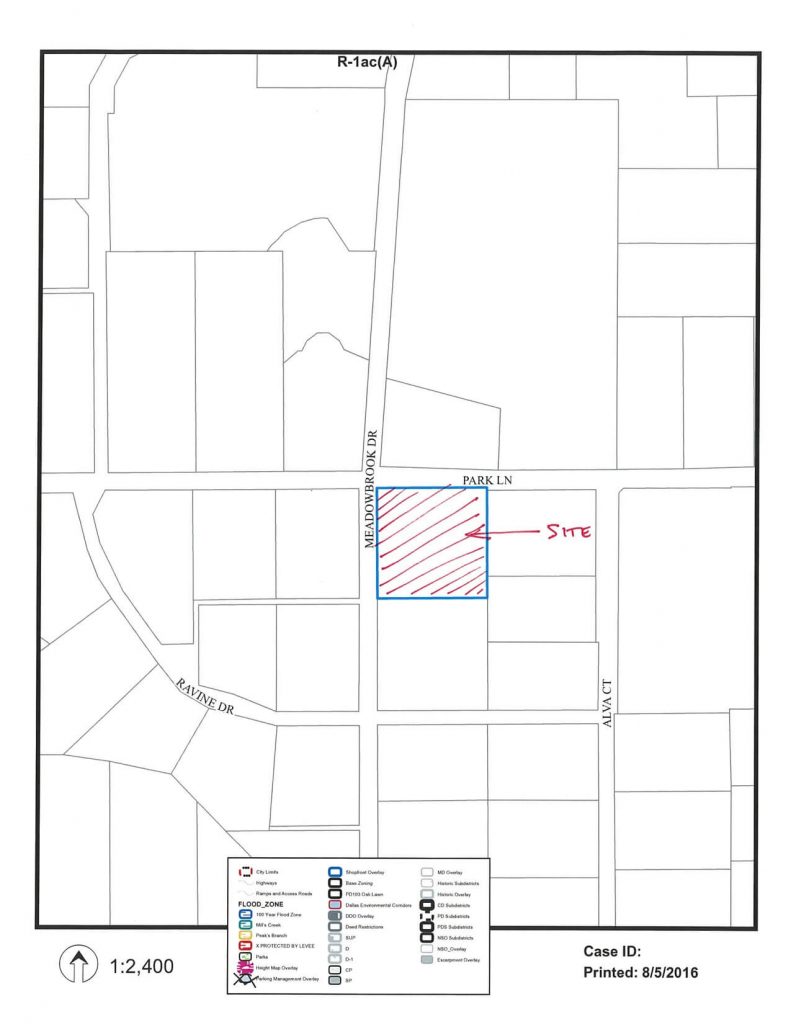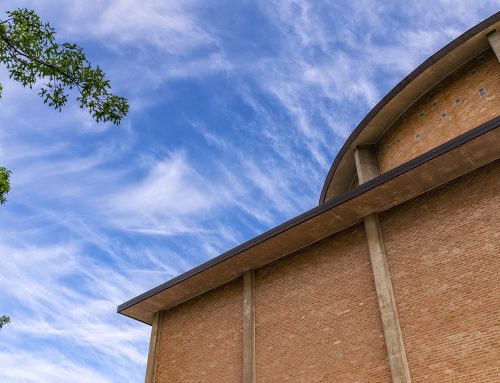
The site at 5310 Park Lane where Nancy Shutt is seeking a historic overlay district for her Charles Dilbeck-designed home.
Our neighborhood is bursting with architecturally significant homes, dreamed up by some of the biggest names in design. One such example sits at 5310 Park Lane, the home of philanthropist Nancy Shutt. Designed by noted Dallas architect Charles Dilbeck, Shutt is seeking to protect the two-story home with its signature lattice-work balcony for future generations.
Shutt has applied to the Landmark Commission seeking a historic overlay district exclusively for her property. The commission will have to decide if the house, built in 1939, meets the criteria to be considered a landmark.
“Then it goes to the Landmark Designation Committee which works with the owners to develop the designation report, which justifies why it should be a landmark, and the preservation criteria, which becomes the ordinance that spells out what is protected on the building and site,” says David Preziosi, executive director of Preservation Dallas. He explained that the property owner and the city work together to decide what protections the property needs. That often includes preserving architectural details such as banisters and windows, while still allowing future homeowners to update the home’s interior.
The proposal then has to go back to the Landmark Committee for a vote, then to the City Plan Commission for another vote and then one more vote in City Council, before it is an officially designated landmark. If history is any predictor, it seems when the property owner is pushing for preservation status, the city is more willing to sign off, as seen recently at the Lakewood Theater. Private residences are less likely to seek preservation status than businesses and schools (see a full list of official city landmarks here), but the city is studded with protected homes such as the Bromberg House, also built in 1939.
Dilbeck was an active local architect who is credited with building more than 600 homes in Dallas. After a few challenging post-depression years in Tulsa, he opened up shop in Dallas in 1932 after the state saw an economic boom when oil was discovered in East Texas. Dilbeck was an unusual architect in that he never followed a signature style, but played with romantic takes on everything from Tudors to French farmhouses to colonial revival — famous for his use of chimneys, balconies and turrets. What’s more, he didn’t just design for the ultra-wealthy — most of his homes were smaller and built for middle-class families. Shutt’s Park Lane home was one of Dilbeck’s largest designs. (We couldn’t find any photos of the property in the public record, but this real estate blog has a couple).






